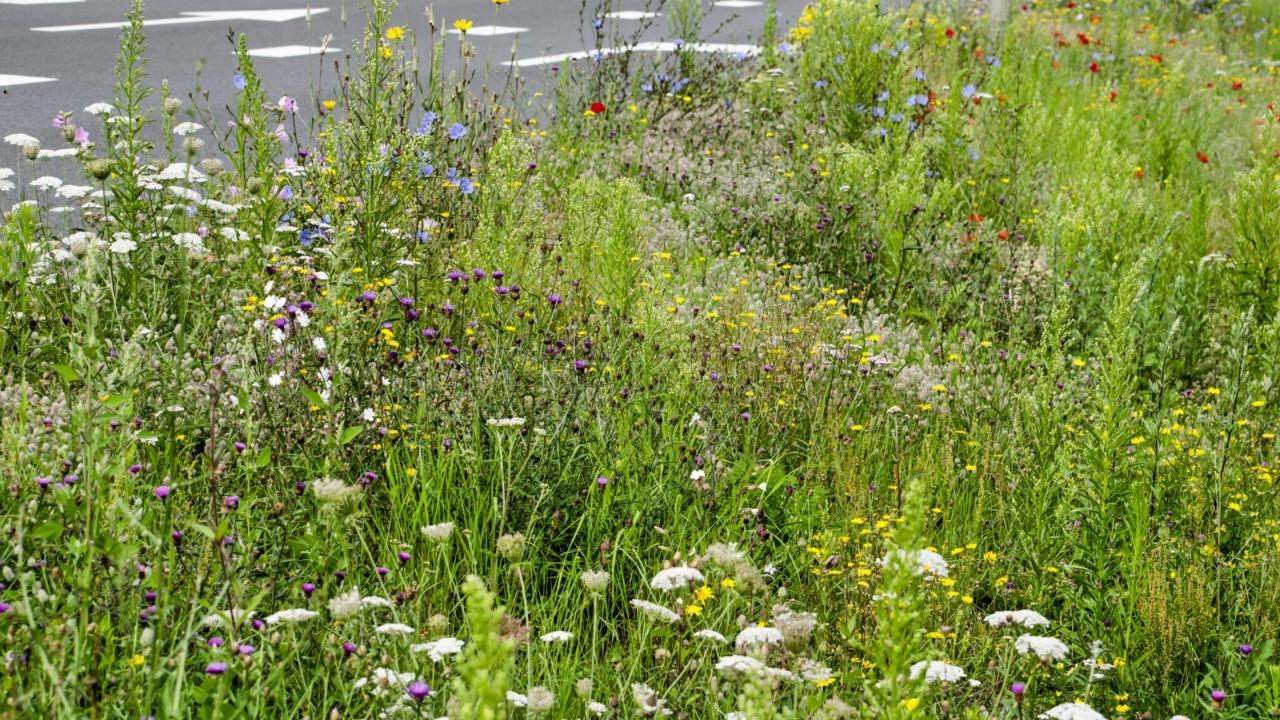
The biodiversity crisis is a risk for our society and economy. Organizations can do something about this by taking biodiversity-conscious steps. But where to start as an organization? Alliander, Impact Institute and Naturalis Biodiversity Center have developed a management framework for biodiversity that shows how an organization can organise themselves to have a positive impact.
Reversebiodiversity loss
What do we mean with biodiversity, where do we have impact, and what does it mean for a company if it wants to contribute to reversing biodiversity loss? For example, a grid company like Alliander, responsible for the construction and maintenance of energy grids. That is what Alliander studied together with social enterprise Impact Institute and a research team of Naturalis Biodiversity Center. The answer is encapsulated in a management framework for biodiversity. It bridges the gap between what biodiversity needs and what an organization can do to achieve it.
Steeringtowards improvement
"Alliander sees that biodiversity loss needs to be reversed to keep the world liveable and wants to take its responsibility in this", says Roland Vink, product owner biodiversity at Alliander. "Flora and Fauna are under pressure and climate change has a major impact on this Alliander wants to do business within the limits of the planet. Practically, this means: we want to be climate neutral in 2024, build a circulair organization and have a net positive contribution to biodiversity. How we achieve this is not an easy task. That is why we started with insight and overview, in order to be able to start steering towards improvement from there. This has led to the biodiversity management framework for grid companies.”

Examplefunction
Why would an organization use a model like this? Simon Wittkamp, analyst and advisor at Impact Institute: "In order to sustainably use the resources of the earth, organizations must work within planetary boundaries. To do this, they want to gain insight into their positive and negative impact on the world and nature.
Reporting obligations are also playing an increasingly important role. Think of the Corporate Social Reporting Directive, or CSRD for short, which stems from the European goal to make the engine of our economy, nature, healthier. In addition, fulfilling an exemplary function and being attractive as an employer on the labor market are important for organizations.”

It is possible to adjust the biodiversity management framework for other sectors or a specific organization. Clicking on the image will give you access to the model and explanation (pdf).
Nature inclusive society
The team concluded that concrete actions have a real impact on improving the living environment. That is why the framework is mainly focused on the actual changes that an organization could make, and which business units are responsible for this. Wittkamp: “For example, does the organization know where it is currently causing damage to nature? This is exactly what Impact Institute helps all kinds of organizations with. Many companies are still insufficiently aware of the fact that most of the impact is in the chain of activities. You can make a lot of impact there. Think, for example, of nature-inclusive purchasing of materials, which can prevent a lot of damage to the environment.”
Vink: “We believe it is important that the framework pays attention to not only direct effects, such as greening new infrastructure, but also indirect ones. Think of the influence we can have on our suppliers and the exemplary function we have for society. That is why we prefer to work together with other infrastructure parties as much as possible and from there also share this framework for broader use. We hope that it will be useful for many parties. In the meantime, we are of course also working with the insights that the process has provided us.”
Organizations can now use the biodiversity management framework. It is possible to adjust it for other sectors or a specific organization. The authors welcome feedback. Based on practical findings, the creators will adapt and refine the framework. After all, taking good care of our living environment is still a quest.
Moreinformation
- View the framework and explanation here in English: Biodiversity management framework for grid companies (pdf)
- In Dutch: Biodiversiteit besturingsmodel voor netwerkbedrijven (pdf)
- For questions and remarks, you can contact Naturalis : Marten Schoonman, Alliander: Roland Vink or Impact Institute: Simon Wittkamp.